1. Examiner (USA) – Small Worlds lets ‘tweens take control. “Most kids today have no concept of a world without the Internet. They’re used to using electronic means to find information, communicate with each other and share things like pictures and videos. The success of social sites like Myspace and Facebook is based on the users’ ability to share experiences with each other; a natural outgrowth of sites like these are online communities like Second Life which are largely supported by user-generated content.”
2. FOX Business (USA) – Fundraising Conference Takes on a ‘Second Life’. “Grizzard Communications Group recently held a conference, Winning Strategies in Challenging Times, focusing on effective and efficient ways of communicating to donors during difficult economic times. The conference was held February 24th – 26th and featured a live panel discussion presented in the online virtual world of Second Life. Major George Hood, National Community Relations Secretary of The Salvation Army, along with other IT communications associates from Alexandria, VA and Reston, PA participated in a panel discussion as animated “Avatars.”
3. IGN (USA) – GDC 09: Breaking Down World of Warcraft. “Blizzard’s Jeffrey Kaplan was at the Game Developer Conference 2009 to talk about directed gameplay. Over the course of the crowded, hour-long session he kept the attendees laughing with a number of World of Warcraft inside jokes as he discussed the ins and outs of what he sees as proper quest design and how to forge the best possible relationship with the player. Kaplan, who previously handled design on World of Warcraft and is now working on Blizzard’s unannounced MMO project, kicked things off by explaining that directed gameplay should guide a player to a fun experience.”
4. TechCrunch (USA) – Sparkle: The iPhone Gets Its First Virtual World (And It’s Completely 3D). “The number of apps for the iPhone/iPod Touch is nearing the 30,000 mark but hardly any application takes advantage of the network effects that lie within the Apple ecosystem. Most developers simply ignore the fact that all iPhones and iPod Touches are interconnected globally and roll out stand-alone applications. This is one of the major reasons why the vast majority of fun apps lack stickiness and are easily forgotten after a few quick bursts. But a Tokyo-based start-up called Genkii is building a unique app that has the potential to not only let a few iPhone users connect with each other, but thousands of them – at the same time or asynchronously. Sparkle is poised to become the first virtual world for the iPhone. What’s more, it’s being developed completely from scratch, exclusively as an MMO for the iPhone/iPod Touch.”
5. Washington Post (USA) – Industry Moves: Second Life CFO Departs For The Real World. “Linden Lab CFO John Zdanowski has resigned, headed off to “find the next business adventure,” according to the company blog. Known as “Zee Linden” in-world (his avatar is pictured here), Zdanowski said it was time to move on given that Linden had successfully grown from a cool tech startup, to a profitable company with a “very healthy cash balance.” He joined in 2006, right before everyone from Reuters and Showtime, to the U.S. Army became obsessed with Second Life, and he’s one of the few members of the company’s initial executive team that lasted this long: founder and CEO Phillip Rosedale stepped down in early 2008, and co-founder and CTO Cory Ondrejka (now at EMI) left in 2007.”
6. Information Week (USA) – How One Small Town Is Using Twitter And Other Social Media. “ollowing my post earlier this week about why local governments aren’t making use of Twitter, Facebook, and other social media, I found myself in Second Life with the city engineer of the town of LaSalle, Ill, talking about how the government of her little town uses Twitter, blogs, Facebook, Skype and Second Life to better serve their citizens and stay in touch with other small-town officials across the United States and Canada.”
7. Internet Business Law Seminars – Trademark Protection in Second Life: USPTO Grants Protection to an Avatar. “The United States Patent and Trademark Office (USPTO) approved a trademark registration filed by a person seeking to protect her avatar image, which represents the content services provided by the avatar’s creator in the Second Life virtual world. Commentators have noted that this decision is groundbreaking as it opens doors for further real life trademark protection for images used in virtual worlds.
Alyssa LaRoche runs a virtual content and services business in Second Life, a three-dimensional virtual world which opened to the public in 2003. As part of the promotion of her business, LaRoche created an avatar image of herself – her alter ego,– which represents her business. The image is called “Aimee Weber” and features a young woman with pigtails and glasses, wearing high black boots, striped tights, green tutu, a see-through green shirt, and brilliant blue wings.”
8. San Francisco Examiner (USA) – The 3-minute Interview: Mark Kingdon. “The CEO of San Francisco-based Linden Lab, maker of the virtual Internet world Second Life that’s imagined and created by users, explains why his company launched the $10,000 Linden Prize to honor the site’s most innovative user. The winner is slated to be announced by April 30. Why give this award? There’s an incredible amount of innovation inside of Second Life. There are many examples … where resident or community groups created something really wonderful that had a real-world connection and impact.”
9. Virtual Worlds News (USA) – UK Government’s “Indulgence” In Second Life Shows Problems Of Perception. “Earlier this week I saw an report by Sky News Online taking the UK’s Department for Work and Pensions to task for “wasting” £20,000 to build a site in Second LIfe and £12,000 a year to maintain it in this time of economic downturn. One complaint is that the virtual world activity wasn’t advertised on the DWP’s website. That makes perfect sense as it sounds like the effort is a test case for an area for companies and government institutions to show off technological innovation. And, as Nortel’s Nic Sauriol pointed out, if that’s the most they waste on a pilot program, it’s pretty well done. ”
10. The Irish Times (Ireland) – Social networking ‘a business opportunity’. “Companies that block access to Facebook, Twitter and networking sites like LinkedIn do so to the detriment of their businesses, warned Web 2.0 evangelists at an event in Derry this week. A conference for business start-ups, Awakening Creative Entrepreneurship , highlighted how social networking was a business opportunity and not a threat. “These are disruptive technologies that change everything. It scares some companies, but if they don’t embrace it they will wither and die,” said Ian Hughes, formerly of IBM, where he held the role of “metaverse evangelist”.
 DeeAnna: I have a Master of Education in Rehabilitation Counseling and a Bachelor of Science in Mental Health and Human Services. I have worked in the mental health field for nearly 20 years. About 10 years ago I discovered the power of the Internet and began providing online chat and email through a couple of e-clinics. Over the years I have always maintained a part-time practice online and have integrated technology in work settings working with interns, employees and clinical supervisees. I have been training therapists since 2001 about the ethical issues pertaining to technology and mental health. Now 100% of my work life is devoted to either providing online therapy or teaching others about online therapy.
DeeAnna: I have a Master of Education in Rehabilitation Counseling and a Bachelor of Science in Mental Health and Human Services. I have worked in the mental health field for nearly 20 years. About 10 years ago I discovered the power of the Internet and began providing online chat and email through a couple of e-clinics. Over the years I have always maintained a part-time practice online and have integrated technology in work settings working with interns, employees and clinical supervisees. I have been training therapists since 2001 about the ethical issues pertaining to technology and mental health. Now 100% of my work life is devoted to either providing online therapy or teaching others about online therapy. Kate Anthony: I realised this in 2001 after speaking at a conference about Telephone Helplines. The Keynote speaker was head of BTExact Technologies, and he referred to the future of virtual worlds, and avatars specifically, being part of the future of health care. Most of the audience was laughing at the concept -– I wasn’t. I went on to work with him and his team to explore the concept and write a white paper on the topic (Anthony, K. and Lawson, M (2002). The Use of Innovative Avatar and Virtual Environment Technology for Counselling and Psychotherapy. Available online at www.kateanthony.co.uk/research).
Kate Anthony: I realised this in 2001 after speaking at a conference about Telephone Helplines. The Keynote speaker was head of BTExact Technologies, and he referred to the future of virtual worlds, and avatars specifically, being part of the future of health care. Most of the audience was laughing at the concept -– I wasn’t. I went on to work with him and his team to explore the concept and write a white paper on the topic (Anthony, K. and Lawson, M (2002). The Use of Innovative Avatar and Virtual Environment Technology for Counselling and Psychotherapy. Available online at www.kateanthony.co.uk/research).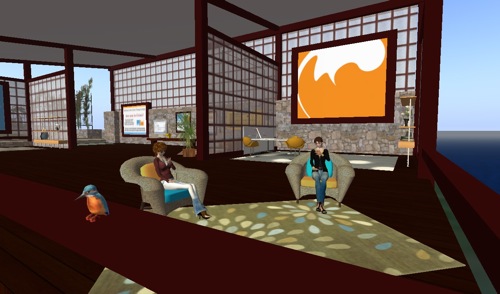


 Last week,
Last week, 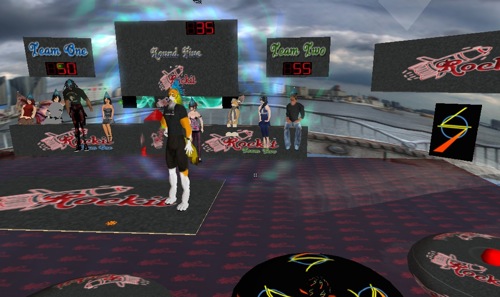

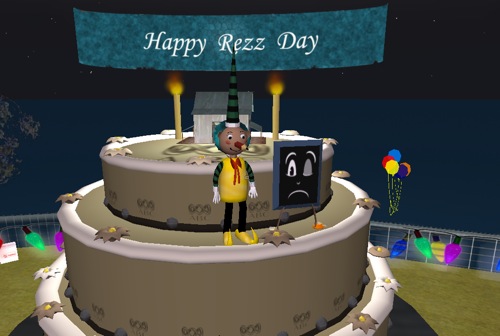
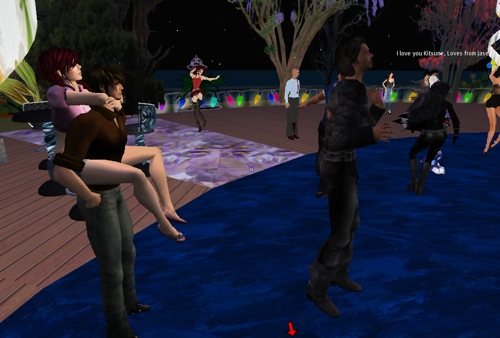
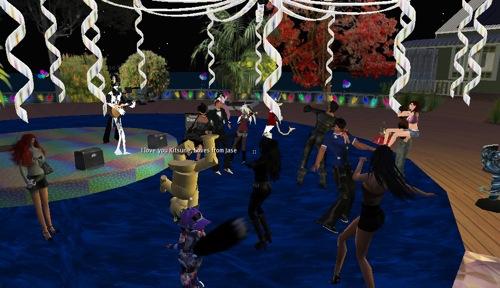
Recent Comments